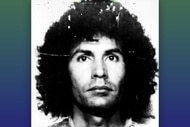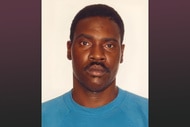Create a free profile to get unlimited access to exclusive videos, breaking news, sweepstakes, and more!
Expert Breaks Down Serial Killer 'Comfort Zones' And How These Murderers Eventually Get Caught
Dr. John White kicked off CrimeCon2021 by explaining serial killer psychology and the types of evidence that ultimately bring them to justice.
Dr. John White, a psychology professor and former investigator, opened up CrimeCon2021 by giving insight into how serial killers are caught.
“How do they not get caught?” the seasoned expert who has developed a database of over 500 serial killers, told an audience on Friday as CrimeCon, which is presented by Oxygen, kicked off.
White explained a bit of serial killer psychology, explaining that "they kill in their comfort zone. We all have our comfort zones,” before identifying three particular categories: where they find victims, where they kill them and where they dispose of their victims' remains.
He pointed out that Samuel Little, believed to be America’s most prolific serial killer, traveled all over the country to prey upon, kill and dispose of his victims, thus being a nomad was his comfort zone. Little eventually admitted that between 1978 and 2005, he killed 93 people as he drifted across the country. However, the enormous scope of his crimes only came years after he was convicted of three killings.
Like many other serial killers, Little evaded capture for years.
White broke down the types of evidence that help lead to a serial killers' capture. The most common is an established link to the victims, which was the case in 29% of known serial killer cases, White said.
Fifteen percent of serial killers who are caught are turned in by someone else, 10% are caught after a victim escaped and 9% confessed outright.
Perhaps surprisingly, only 5% of serial killers have been caught through forensic evidence, White said. That makes Golden State Killer Joseph DeAngelo, who was captured through DNA evidence decades after his killing spree, a rare case. (Though many of these cases would have been solved before the advent of advanced forensic analysis.) Only 5% are captured after a witness called the police. White explained that serial killer Adam Lane, known for stalking victims off highways while working as a truck driver in 2007, was caught when the father of a 15-year-old victim heard her screams after he broke into their home. That father subdued him, leading to his arrest. Evidence left at a crime scene only makes up 1% of captured serial killers, as does matched composite drawings.
White said, that with some exceptions, serial killers will continue to kill until they are caught.




























